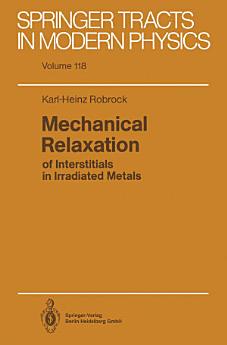Mechanical Relaxation of Interstitials in Irradiated Metals
Karl-Heinz Robrock
เม.ย. 2006 · Springer Tracts in Modern Physics หนังสือเล่มที่ 118 · Springer
eBook
108
หน้า
reportคะแนนและรีวิวไม่ได้รับการตรวจสอบยืนยัน ดูข้อมูลเพิ่มเติม
เกี่ยวกับ eBook เล่มนี้
Intrinsic point defects due to high energy particle irradiation are studied in terms of anelastic principles and experimental techniques. A critical assessment of available data on binding and diffusion energies of self-interstitials and self-interstitial solute atom complexes is given. New results are presented for the elastic aftereffect of self-interstitials and caging motions, i.e., localized diffusion of metallic interstitial atoms. A novel point discussed is how the design of torsion pendulum and vibrating reed devices are affected by in situ irradiations with electrons. The dynamics of elastic dipoles are outlined and supplemented by the results of computer simulations.
ให้คะแนน eBook นี้
แสดงความเห็นของคุณให้เรารับรู้
ข้อมูลในการอ่าน
สมาร์ทโฟนและแท็บเล็ต
ติดตั้งแอป Google Play Books สำหรับ Android และ iPad/iPhone แอปจะซิงค์โดยอัตโนมัติกับบัญชีของคุณ และช่วยให้คุณอ่านแบบออนไลน์หรือออฟไลน์ได้ทุกที่
แล็ปท็อปและคอมพิวเตอร์
คุณฟังหนังสือเสียงที่ซื้อจาก Google Play โดยใช้เว็บเบราว์เซอร์ในคอมพิวเตอร์ได้
eReader และอุปกรณ์อื่นๆ
หากต้องการอ่านบนอุปกรณ์ e-ink เช่น Kobo eReader คุณจะต้องดาวน์โหลดและโอนไฟล์ไปยังอุปกรณ์ของคุณ โปรดทำตามวิธีการอย่างละเอียดในศูนย์ช่วยเหลือเพื่อโอนไฟล์ไปยัง eReader ที่รองรับ







